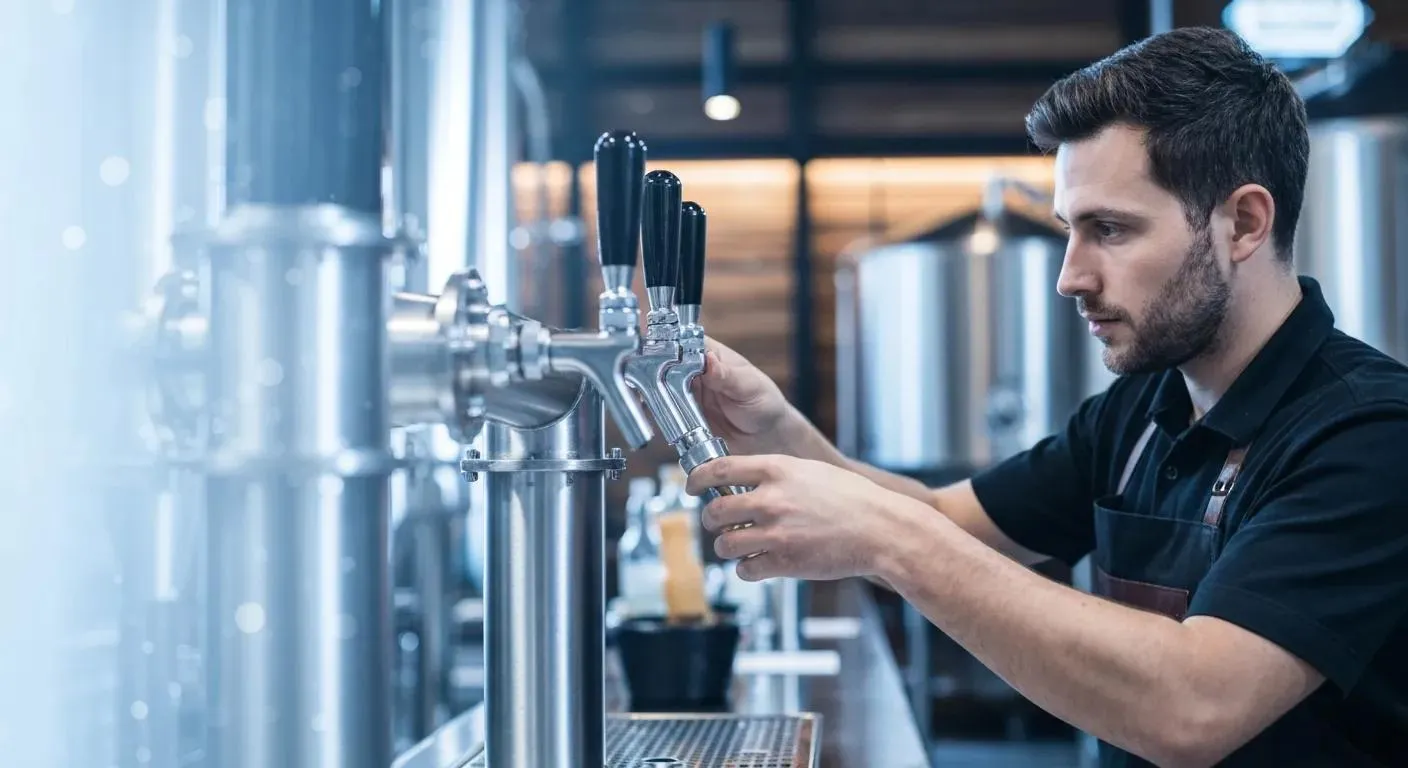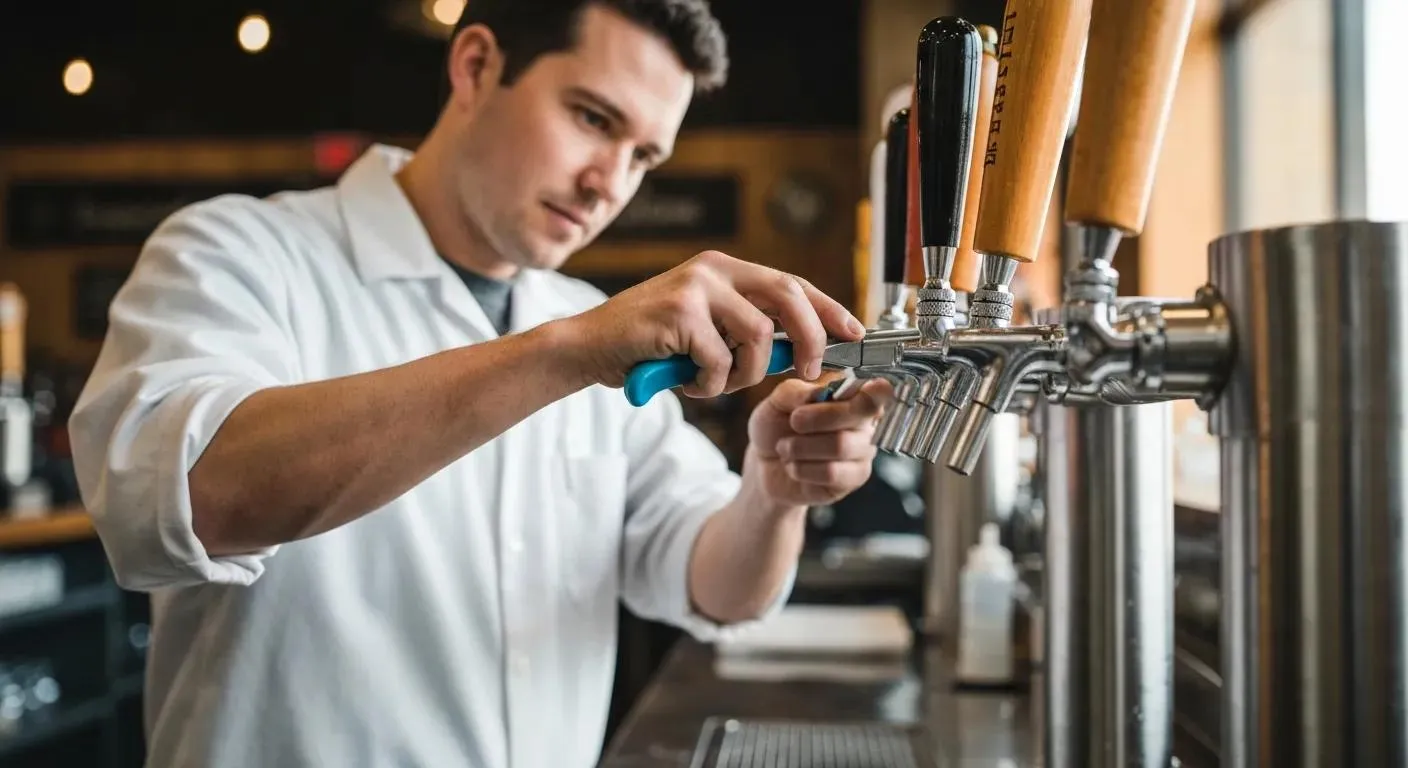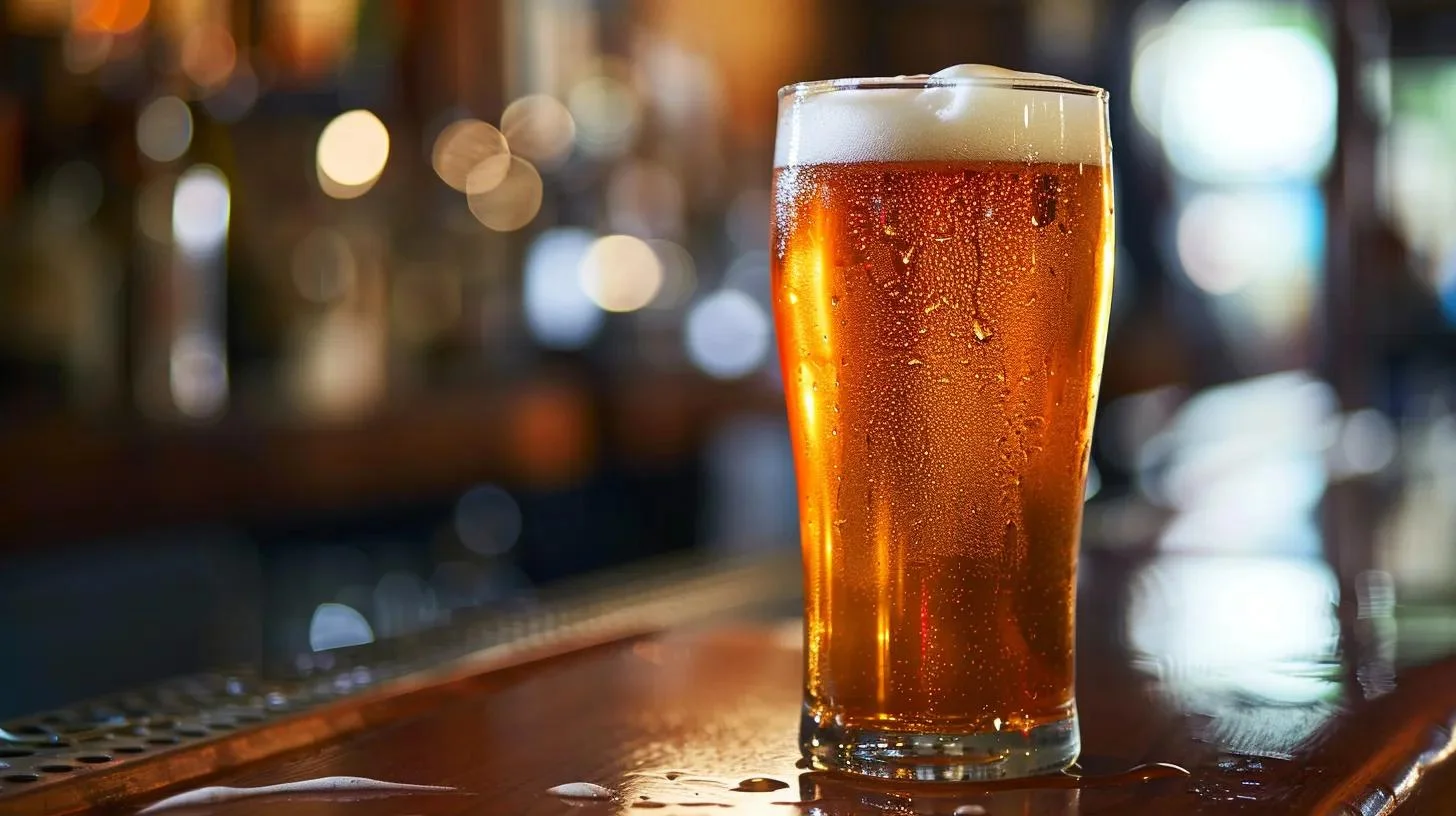Beer Gas Blender vs Beer Pumps: Which is Better for Your Draft System?

Beer gas and beer pumps are two different methods of dispensing beer in a draft system. The choice between the two depends on various factors, including the type of beer being served, the distance between the keg and the tap, and the draft system being used.
Beer pumps use pressure to move beer from the keg to the tap, while beer gas uses a blend of carbon dioxide (CO2) and nitrogen (N2) to dispense beer. Beer pumps are ideal for long-draw systems where the distance between the keg and the tap is more than 50 feet. They are also suitable for serving beers with different carbonation levels as the serving pressure for each line can be adjusted separately. On the other hand, beer gas is commonly used for nitrogenated beers like Guinness, where the nitrogen creates a creamy head and a smooth mouthfeel—but also used to push beers great distances without overcarbonating them.
Both beer pumps and beer gas have their advantages and disadvantages, and the choice between the two ultimately depends on the individual needs of the bar or restaurant. In this article, we will explore the differences between beer gas and beer pumps, the pros and cons of each method, and which one is best for beer systems.
Understanding Beer Gas Blenders
Beer gas blenders are devices that mix carbon dioxide (CO2) and nitrogen (N2) gases in a specific ratio to create a blended gas that is used to dispense beer. The main purpose of using a beer gas blender is to achieve the right carbonation level for the beer that is being served.
The most common ratio used for beer and gas blends is 75% nitrogen and 25% carbon dioxide. This ratio is also known as "Guinness gas" because it is the gas blend used to dispense Guinness Stout. The nitrogen in the gas creates smaller bubbles, which results in a creamier head and smoother mouthfeel.

Beer gas blenders can be installed in line with the beer lines or used as a separate unit. They can be automatic, with blenders being more accurate and consistent.
One advantage of using a beer gas blender is that it allows for the use of longer beer lines without the risk of over-carbonation or foaming. This is because the nitrogen in the gas does not dissolve in the beer as easily as carbon dioxide, which means it does not contribute to the carbonation level of the beer.
Another advantage to using blended gasses to dispense beer is blended gas isn't as sensitive to temperature changes as pure CO2. This means if you have a beer cooler and people walk in and out constantly you won't see a change in the draft beer dispensing system as much as you would if CO2 is solely pushing the beer in the system.
However, there are also some disadvantages to using a beer gas blender. One is that it can be more expensive than using a standard direct draw CO2 system. Another is that it can be more difficult to dial in the correct gas-to-blend ratio and pressure settings for each beer style, which can lead to inconsistent pours and off-flavors. With the right Draft beer professional, it shouldn't be an issue.
Understanding Beer Pumps
Beer pumps are devices that are used to pump draft beer over long distances from a beer cooler without compromising the integrity of the beer. They are also used with brite tanks and casks to dispense beer when added pressure is needed. Typically, there are a few ways to push beer in a draft system, either mixed gas or CO2.

Using beer pumps is an easy way to dial in the system and ensure that the serving pressure for the lines is separate. This allows for different beer carb levels to be poured and made. Beer pumps are a popular choice because they are low maintenance and easy to use.
One of the main advantages of using beer pumps is that they are designed to handle a variety of beers, including those with high carbonation levels. They are also ideal for dispensing beer long distances and up multiple floors.

In summary, beer pumps are a reliable and efficient way to dispense draft beer. They are easy to use, and can handle a variety of beer types and carbonation levels.
Design and Functionality of Beer Gas Blenders
Beer gas blenders are devices used in the draft beer industry to blend nitro and CO2 gases in a specific ratio to dispense beer. The device is designed to mix the gases in a controlled environment, ensuring that the beer is dispensed at the correct pressure and with proper carbonation levels. The following sub-sections discuss the benefits of beer gas blenders, the best gas mix for serving beer, the Green Air Supply Nitrogen Separator, and whether beer gas is better than CO2 for serving beer.
Benefits of Beer Gas Blenders
Beer gas blenders offer several benefits over traditional CO2 systems. The first benefit is that beer gas blenders allow for a smoother, creamier pour. This is because the nitrogen in the gas mix creates smaller bubbles than CO2, resulting in a smoother mouthfeel. Additionally, because nitrogen is less soluble than CO2, it does not dissolve into the beer as easily, resulting in a longer-lasting head.
Another benefit of beer gas blenders is that they allow for longer beer lines. CO2 systems are limited by the length of the beer line, whereas beer gas blenders can dispense beer over longer distances without sacrificing quality. This is because the nitrogen in the gas mix provides additional pressure to push the beer through the lines.
What is the Best Gas Mix for Serving Beer?
The best gas mix for serving beer depends on the type of beer being dispensed. For most beers, a mix of 75% nitrogen and 25% CO2 is recommended. This gas mix is commonly referred to as "beer gas" or "Guinness gas" and is ideal for serving nitrogenated beers like stouts and porters. For other types of beer, a mix of 60% nitrogen and 40% CO2 may be more appropriate.
Green Air Supply Nitrogen Separator
The Green Air Supply Nitrogen Separator is a device used in conjunction with beer gas blenders. It separates nitrogen from the surrounding air, allowing for a more cost-effective and environmentally friendly way to supply nitrogen to the beer gas blender. The device works by compressing air and separating the nitrogen from the other gases using a membrane. This is what I recommend using for every beer install with Renny's Draft Solutions.

Is Beer Gas Better than CO2 for Serving Beer?
Whether beer gas is better than CO2 for serving beer depends on personal preference and the type of beer being served. Beer gas is ideal for nitrogenated beers like stouts and porters, as it provides a smoother mouthfeel and longer-lasting head. However, for other types of beer, CO2 may be more appropriate. Ultimately, the decision of which gas to use comes down to the individual brewer's preference and the type of beer being served. The distance beer has to travel before being poured and how many kegs are other variables to think about when setting up your draft system.
In summary, beer gas blenders are a valuable tool in the draft beer industry, offering several benefits over traditional CO2 systems. The best gas mix for serving beer depends on the type of beer being dispensed, and the Green Air Supply Nitrogen Separator is a cost-effective and environmentally friendly way to supply pure nitrogen back to the beer gas blender. Whether beer gas is better than CO2 for serving beer depends on personal preference and the type of beer being served.
Design and Functionality of Beer Pumps
Beer pumps are an alternative to using gas blended with beer gas to dispense draft beer. This section will discuss the benefits and drawbacks of using beer pumps in a draft beer system.
What are the benefits of using beer pumps?
- Precise control: Beer pumps allow for precise control over the serving pressure for each line. This is especially useful when serving beers with varying carbonation levels.
- Easy balancing: Beer pumps maintain a constant output pressure, making it easy to balance the lines in a draft system.
What are the Cons of Beer Pumps?
- Higher initial cost: Beer pumps are more expensive than other dispensing methods, such as using blended beer gas.
- Flojet Reversal Valves: These are needed for beer pumps to recirculate line cleaning.

- Potential for foaming: Beer pumps can cause foaming if the beer is not properly balanced or if the lines are not cleaned regularly.
- High Maintenance Costs: With Beer pumps and their equipment expect higher maintenance costs over the long run.
Overall, beer pumps provide precise control and easy balancing in a draft beer system, but they come with a higher initial cost and required maintenance. They are a good option for smaller draft systems or for serving beers with varying carbonation levels.
Comparing Efficiency: Beer Gas Blender Vs Beer Pumps
When it comes to dispensing beer, two popular methods are using a beer gas blender or beer pumps. Both methods have their pros and cons, but which one is more efficient?
Beer Gas Blender
One advantage of using a beer gas blender is that it allows for precise control over the carbonation level of the beer. The blender can be adjusted to produce a specific blend of gases that will result in the desired carbonation level of wasted beer. Additionally, because the beer is pushed out of the keg with a blended gas, there is less agitation of the beer, which can result in a smoother pour and less foaming.
However, one downside of using a beer gas blender is that it requires a separate gas cylinder for the nitrogen gas, which can be more expensive than using only CO2. Additionally, the cheapest gas blender itself can be more expensive than a simple beer pump system.
Beer Pumps
Beer pumps, on the other hand, use a pump to push beer from the keg to the tap. The pump can be adjusted to control the pressure of the beer, which affects the carbonation level. One advantage of using a beer pump system is that it is typically less expensive than a beer gas blender system. But if you have a bunch of product lines beer pumps can become more expensive
However, one downside of using a beer pump system is that it can result in more agitation of the beer, which can lead to more foaming and a less smooth pour. Additionally, because the pressure of the beer is controlled by the pump, it can be more difficult to achieve a precise carbonation level.
Cost Analysis: Beer Gas Blender Vs Beer Pumps
When it comes to choosing between beer gas blenders and beer pumps, one of the main factors to consider is the cost. While both options have their pros and cons, the cost can be a deciding factor for many businesses.
Beer Gas Blender
A beer gas blender is a device that mixes carbon dioxide (CO2) and nitrogen (N2) gases in a specific ratio to create the perfect blend for dispensing beer. The cost of a beer gas blender can vary depending on the brand, size, and features. On average, a beer gas blender can range from $700 to $2,500.
In addition to the initial cost, there are ongoing costs associated with using a beer gas blender. The gases used in the dual gas blender need to be purchased and refilled regularly, which can add up over time. The cost of gas varies depending on location and supplier.
This is where Green Air Supply comes in. For $160/Month plus charges for a CO2 cylinder, you can enjoy the perfect blended gas for ales/lagers and Nitrogenated beers. If you currently use a bulk CO2 system you don't need a CO2 cylinder.
Beer Pumps
Beer pumps, on the other hand, are a simpler and more affordable option for dispensing beer. A beer pump uses air pressure to move the beer from the keg to the tap. The cost of a beer pump can range from $90 to $130. Remember the additional cost for a flojet reversal valve which is $45 dollars.
Using a beer pump also has ongoing costs, such as the need to replace the pump periodically.
Maintenance: Beer Gas Blender Vs Beer Pumps
When it comes to maintenance, beer pumps, and beer gas blenders require different levels of attention. Beer pumps are generally easier to maintain since they have fewer components compared to beer gas blenders. On the other hand, beer gas blenders require more attention because they have more moving parts, which can wear out over time.
To maintain a beer pump, one should regularly check and clean the lines to prevent clogs and ensure that the beer is flowing smoothly. Additionally, the pump should be lubricated regularly to keep the parts moving smoothly. If a problem arises, it is usually easy to identify and fix.
Beer gas blenders, on the other hand, require more attention due to the complexity of their components. The blender should be checked regularly to ensure that the gas blend is correct and the pressure is balanced properly. If the blend is off or the pressure is not balanced, the beer will not pour correctly, resulting in a loss of revenue.
It is also important to check the blender's filters and replace them as necessary. Dirty filters can cause the blend to be off or even damage the blender itself. If the blender is not functioning correctly, it may need to be serviced or replaced, which can be costly.
Choosing the Right System for Your Needs
When it comes to choosing between a beer gas blender and a beer pump, it ultimately depends on your specific needs and preferences. Here are a few factors to consider:
Distance
If you need to dispense beer over a long distance, a beer pump might be the better option. Beer pumps allow you to pump draft beer long distances from a beer cooler without compromising the integrity of the beer. On the other hand, beer gas blenders are typically used in commercial draft beer systems and are better suited for long distances too.
Pressure
If you need to dispense beer at a higher pressure, a beer pump is the way to go. Beer pumps are also used with brite tanks and casks to dispense beer when added pressure is needed. Beer gas blenders, on the other hand, typically use a mix of nitrogen and carbon dioxide to push beer through the system.
Maintenance
Beer pumps require more maintenance than beer gas blenders. They need to be cleaned regularly to prevent contamination and ensure optimal performance. Beer gas blenders, on the other hand, require less maintenance and are easier to clean.
Cost
Beer pumps are generally more expensive than beer gas blenders. They also require additional equipment, such as reversal valves, which can add to the cost. Beer gas blenders, on the other hand, are more affordable and require less equipment.
Ultimately, the choice between a beer gas blender and a beer pump comes down to your specific needs and preferences. Consider the factors outlined above and choose the system that best fits your needs.
Conclusion
When it comes to choosing between a beer gas blender and beer pumps, it ultimately depends on the specific needs and preferences of the establishment.
Beer pumps offer the advantage of dialing in the serving pressure for individual lines, allowing for the pouring of beers with various carb levels. They are also ideal for very long draught systems, typically over 100 feet. However, they require more maintenance than beer gas systems and can be more expensive to install.
On the other hand, beer gas blenders offer the advantage of being able to use a single gas source for all beers, simplifying the system and reducing maintenance costs. They are also more affordable to install than beer pumps. However, they are not ideal for very long draught systems and may not be able to provide the same level of precision as beer pumps.
Ultimately, the decision between beer gas blenders and beer pumps will depend on the specific needs and preferences of the establishment. It is important to consider factors such as the length of the draught system, how many bar stations, and the types of beer pouring. Consult with a professional draft beer technician to figure out what is best for you. In my personal opinion, I will use a Green Air Supply nitrogen separator/blender over beer pumps. Having used beer pumps for over a decade in commercial settings. I believe the advantage is the blender.
For more information on how you can use blenders for your beer system contact us at Renny's. I would like to help you find the right gas blender for your draft system. Please check out our other content on our beer education blog too.
Cheers!



